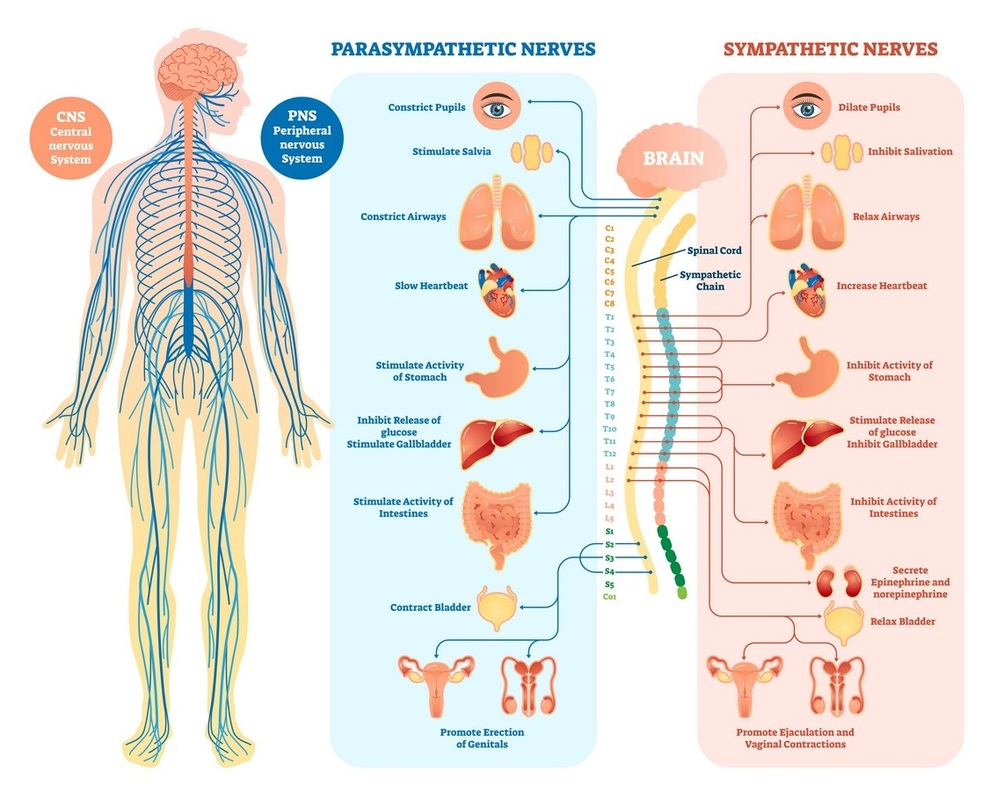13.1 The nervous system
The central nervous system
The central nervous system consists of the brain and the spinal cord. The spinal cord runs along the spine in the spinal canal, protected by the vertebrae. In a human, 31 pairs of spinal nerves, one on each side of the vertebral column, branch around the body and form the peripheral nervous system.The peripheral nervous system
The peripheral nervous system carries messages towards the central nervous system from various sensory cells, such as the surfaces of internal organs, joints, tendons and skin.
The peripheral nervous system also includes the motor nerves that carry information from the brain and spinal cord to muscle fibers throughout the body. These motor neurons allow us to take physical action in response to stimuli in the environment.
The involuntary autonomic nervous system in the peripheral nervous system controls functions that we cannot consciously influence at all. For example, digestion and heart rate function completely without conscious control or the ability to influence it. The autonomic nervous system also regulates, for example, the body's temperature.
Part of the autonomic nervous system works when we are at rest and the other half when the person is active. For example, when you rest, your heart rate drops, but your digestion becomes more efficient. When you run, your heartbeat picks up again, but digestion stops.
 The nervous system.
The nervous system.